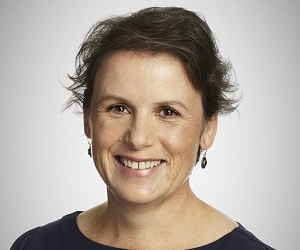A talk with Lisa Frazier, chief innovation officer of the Enterprise Innovation Group at Wells Fargo.

Global Finance: What is your mandate as chief innovation officer of Wells Fargo’s Innovation Group? What is the group’s mission?
Lisa Frazier: Within the Innovation Group, our mission is to drive the future of financial services and act as a catalyst for transformational change across the enterprise. We develop strategies and use new technologies to solve customer and business problems, improve customer experiences and create new business models. This is on behalf of the enterprise or in partnership with an individual business line. For example, at the enterprise level, we lead artificial intelligence (AI), personalization, financial health, distributed ledger platform and a research and development function, which includes focus areas like identity, knowledge graphs and quantum computing.
GF: What characteristics should a successful innovation strategy feature?
Frazier: An innovation plan first and foremost needs a point of view regarding the future. We started by developing a perspective for banking in 2025. This perspective established a vision and set the agenda and priorities. We then refresh it annually. To ensure the plan’s success, we set metrics and measure what matters. This can include progress on ideation efforts in our incubator, proofs-of-concept with our Wells Fargo Startup Accelerator companies, pilot outcomes and, ultimately, impact in production.
GF: With which departments or stakeholders does your group typically liaise?
Frazier: We engage at the most senior levels of the business lines. The respective business CEOs and their leadership teams are critical to establishing the innovation agenda for their business lines. As we work across all business lines, we also see cross-enterprise capabilities and needs that we are best positioned to develop on behalf of all businesses. This is how our AI program came into existence within the Innovation Group.
GF: What do you view as the most misunderstood aspect of or belief about innovation?
Frazier: It’s one of these two: [that] innovation is only about building shiny toys like robots or that it’s disconnected from the financial outcomes of the company. Neither can be true to be successful.
GF: What criteria must a proof-of-concept meet to be deemed worthy of a pilot?
Frazier: Each pilot has a defined problem statement and metrics; depending upon the pilot, the metrics vary. For example, we may need to prove the accuracy of voice-to-text conversion software or show improvements in digital-identity pass rates.
GF: There’s a digital-era cliche that to innovate means “move fast and break things.” What drives your group’s speed, and how much are they allowed to break?
Frazier: Our innovation labs are separate from technology-production environments, so we can safely “break” things without disrupting bank operations. Our speed is driven by our curiosity and creativity and balanced by our responsibility to serve and protect customers, their monies and their data.



